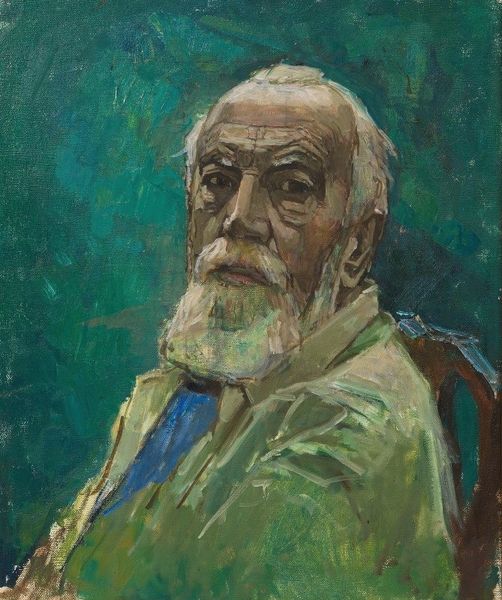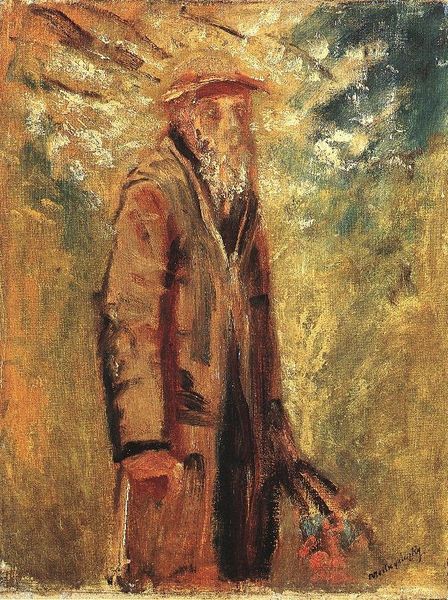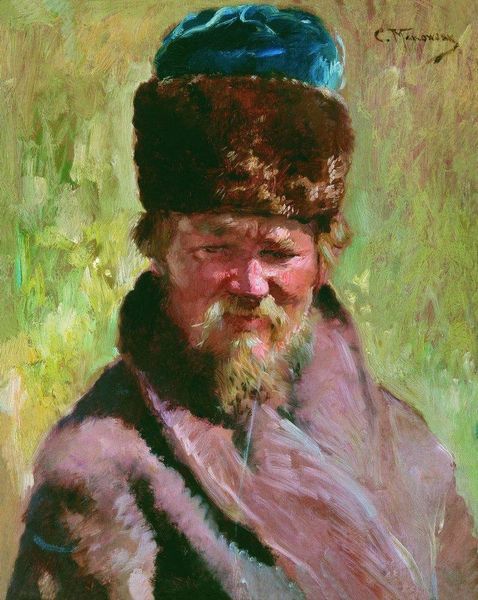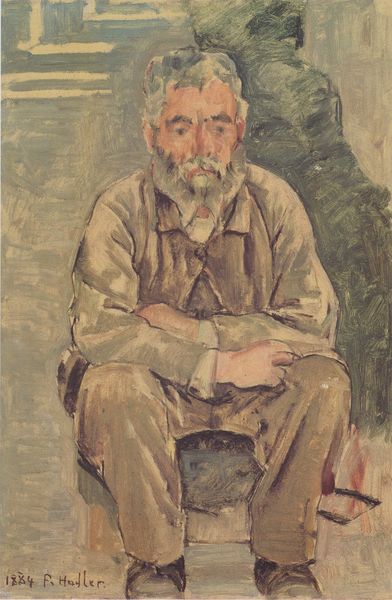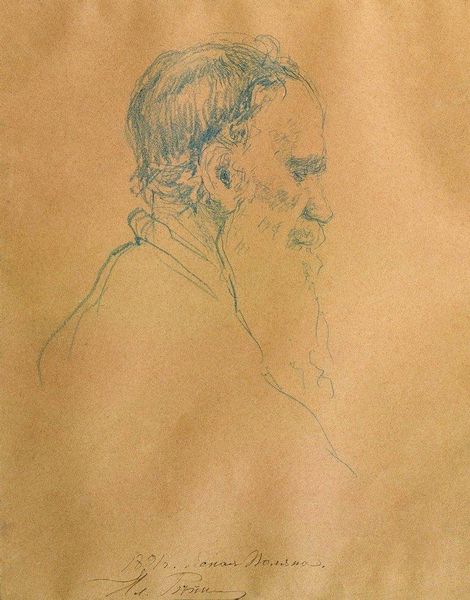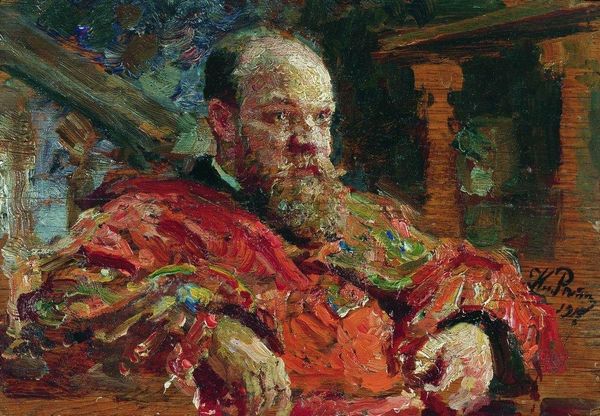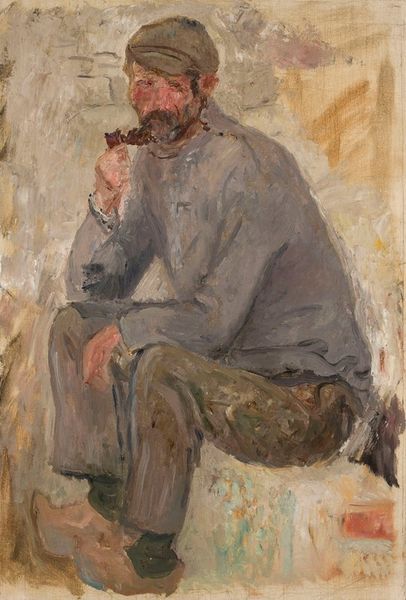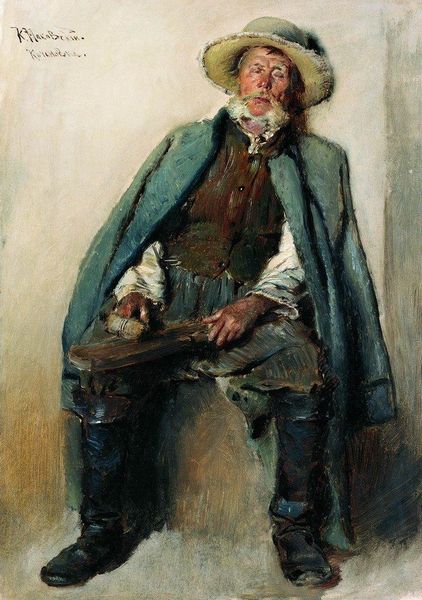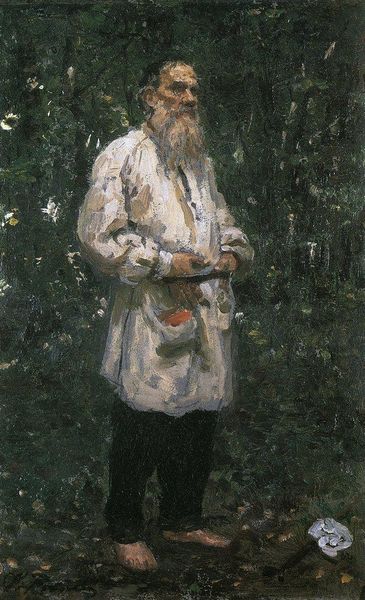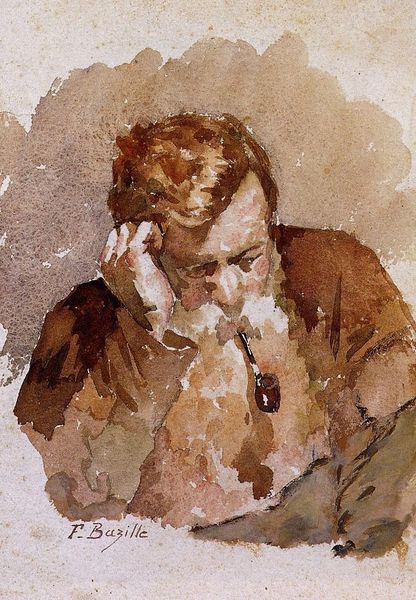
Copyright: Public domain
Editor: Here we have Konstantin Makovsky's "Old Man," painted around 1890. It's an oil painting, and I'm struck by the textures; the way the brushstrokes seem to mimic the fur of his hat and the roughness of his beard. What do you see in this piece? Curator: Immediately, I consider the historical context. Late 19th century Russia was a time of enormous social upheaval. The figure of the "peasant," often romanticized or othered by the intelligentsia, becomes a focal point. Notice how Makovsky presents this individual – not idealized, but rendered with a striking realism. This demands we ask: whose stories are told and who is telling them? Editor: So you see this as more than just a portrait? Curator: Absolutely. Consider the averted gaze, the weathered face. It evokes a sense of weariness, perhaps even quiet resistance. In a society grappling with serfdom's legacy and burgeoning industrialization, this image could represent the voiceless, the marginalized. How might this representation challenge or reinforce prevailing stereotypes of the peasantry at the time? Editor: I see what you mean. It's not just a study of an individual, but a commentary on a whole class of people, and the power dynamics at play in representing them. Curator: Precisely. And by focusing on his individual humanity, rather than some noble peasant archetype, Makovsky arguably allows us to confront the uncomfortable realities of his time. A key element, for me, is thinking about the impact and ethics of looking. What do you think Makovsky asks us to consider? Editor: He’s encouraging us to look, to acknowledge, to really *see* the individual behind the label. Thanks, I will not look at portraits the same way. Curator: It is rewarding to view art through the lens of activism, and to understand the message that comes with each piece.
Comments
No comments
Be the first to comment and join the conversation on the ultimate creative platform.

